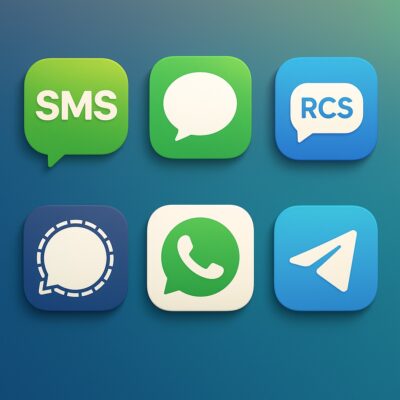13,600 Active Engagements
If it feels like digital transformation is never ending, that is because it is. Moore’s Law has driven technical innovation for the past 50 years, driving smaller, faster, more powerful personal computers. From mainframes to personal computers to the rise of the Internet, companies have been faced with adapting to new and emerging technologies since the ‘60s. However, Digital Transformation itself has transformed. It is no longer just about digitizing assets and optimizing processes. Automation is king. The explosion of big data over the past decade has driven the expansion of cloud computing and machine learning, which has fueled the growth of Artificial Intelligence (AI), robotics, and the Internet of Things (IoT). These technologies (and others) will continue to disrupt traditional business models, allow businesses to scale beyond physical infrastructure, and provide innovative and exciting ways to service customers. Is your company prepared?

Digital transformation is not an option.
It’s a requirement to operate a business in the 2020’s and will only gain importance in the years to come. Companies without a pragmatic and aspirational digital transformation strategy will be left in the dust by their competitors. It is industry agnostic; whether you are in High-Tech or Manufacturing, Healthcare or Retail, it is an adapt-or-die scenario. If you’re not thinking through adapting your operating models using emerging digital frameworks, you’ll be playing catch up while others optimize their margins and better serve customers. It takes time to realize the benefits of a digital transformation strategy, getting started today will increase your odds for success in the future.

Some of the maturing and emerging digital trends organizations will grapple with this year include:
Artificial Intelligence (AI) and Machine Learning (ML)
AI and ML have gained popularity recently with OpenAI’s ChatGPT exposing consumers to the possibilities of Large Language Models (LLM). Microsoft has invested significantly in OpenAI while other conversational AI like Google’s Bard have recently been announced. This is not new technology, but it is maturing, and companies are finding relevant use cases. More companies will be incorporating these technologies into their businesses in the coming months. Predictive and generative AI is transforming how leaders gain insights and how businesses connect with their customers. Data and AI will become the bedrock for companies in the coming years, so it is critical to start forming the strategy today.
Cloud Computing
Cloud computing will likely continue its dominance, with more companies moving their applications and data to public cloud providers (AWS, Azure, and GCP dominating the space). As new data privacy and residency laws emerge, it is imperative for companies to understand what data is collected and where it is stored. There are several areas to consider when looking at cloud computing, starting with whether your business will be natively hosted on a single cloud using property tools, if you need to be portable between public clouds, or if you want to run a hybrid environment with on-prem systems. As established companies plan a cloud migration, it is critical to rethink the infrastructure and refactor applications (as opposed to ‘lift-and-shift’ environments) to optimize performance and control cost. Cloud FinOps (real-time cloud financial management) is a necessary discipline required to run a successful cloud environment.
Cybersecurity
With the increasing number of threats, cybersecurity will remain a top priority for companies looking to protect their data and infrastructure. Cyber-attacks pose the biggest existential threat to any business, from geopolitical events to bad actors exploiting human weaknesses, there are infinite ways a company can be breached. Companies need to assess their level of risk by identifying potential threats, vulnerabilities, and consequences of various types of critical impacts. Independent assessments are vital to identifying often unforeseen risks.
Robotic Process Automation (RPA)
RPA is a rapidly growing technology already adopted by many organizations, automating repetitive, rule-based tasks. Integration of AI and ML will allow RPA systems to perform more complex tasks that require decision-making and cognitive capabilities. It will also allow these systems to learn and adapt, making them more efficient. Leveraging cloud-based RPA systems will enable companies to scale at a lower cost.
“The future is digital. It’s no longer about transforming your business, it’s about transforming your entire industry.”
Satya Nadella, CEO of Microsoft.
Digital Twins
Digital twins are virtual replicas of physical assets or processes created by combining data from several sources. Digital twins will gain importance in the coming years as they help companies simulate scenarios and identify potential issues before they occur. The expansion of AI, machine learning, and IoT will create more advanced digital replicas. Heathcare, construction, and manufacturing industries are already putting digital twins to use replicating procedures to predict outcomes, reduce downtime, and eliminate waste.
Internet of Things (IoT)
IoT devices and sensors are becoming more widespread, allowing companies to gather more data and automate processes. This becomes even more powerful with the expanded use of AI and machine learning. Security, privacy, and regulatory compliance are key areas to consider when looking at IoT devices. Additionally, planning the scalability, interoperability, and integration with existing systems is important as a business maps out the use cases.
Blockchain
Blockchain technology will likely continue to become more mainstream, potentially improving data security, transparency, and traceability. Blockchain has the potential to help companies in various ways, such as supply chain management, digital identity verification, payments, data sharing and collaboration, and intellectual property management.
Digital transformation is an ongoing, living process. Companies need to be conscious of where they are, honest about where they should be, and deliberate with how far they want to go. Maturing and emerging trends are exciting. The synergies of these emerging technologies are clear. How they will impact your business model and improve your customer experience should be the current focus of your strategy planning today.

In the coming weeks, I will explore ways to stay ahead of transformation programs. Subscribe at Citanex.com to learn about the risk vectors in Digital Transformation, the impact they could have on your business, and ways to mitigate those risks.



